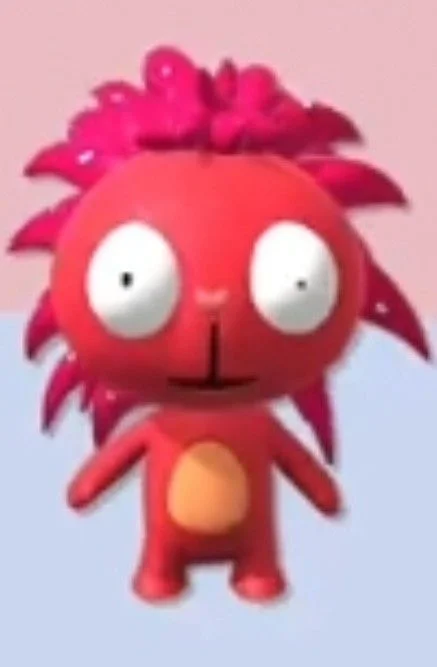In the vast landscape of internet culture, there exists a subculture that finds fascination in the unsettling, the bizarre, and the downright disturbing. One such corner of this digital realm is the world of “Happy Tree Friends Cursed Images,” often abbreviated as HTF Cursed Images. These images, derived from the popular animated series “Happy Tree Friends,” blend dark humor with shock value to create a unique and polarizing form of online content. In this article, we will delve into the origins, characteristics, and psychological allure of HTF Cursed Images, exploring why they captivate and repel audiences in equal measure.

The Genesis of HTF Cursed Images: A Collision of Innocence and Horror
“Happy Tree Friends,” created by Rhode Montijo, Kenn Navarro, and Aubrey Ankrum, first debuted in 1999 as a web-based animated series. The show features seemingly cute and innocent anthropomorphic animal characters engaged in slapstick comedy. However, this innocence is quickly shattered as the characters meet gruesome and often fatal accidents, showcasing a stark contrast between their appearance and the grisly events they endure.
It was within this dissonance that the concept of “cursed images” found its breeding ground. Cursed images, in the broader sense, are pictures that disturb viewers on a subconscious level, often due to a juxtaposition of the mundane and the eerie. When applied to “Happy Tree Friends,” these images typically involve scenes of characters in moments of intense pain or grotesque violence, capturing freeze-frames of their tragic fates.
Characteristics of HTF Cursed Images: Dissecting the Disturbing
HTF Cursed Images are characterized by several key elements that contribute to their eerie and disturbing nature:
- Contextual Contrast: The primary aspect of a cursed image is the stark contrast between the appearance of innocence and the content’s disturbing nature. In the context of HTF Cursed Images, this contrast arises from the familiar appearance of the characters clashing with the horrifying events depicted in the images.
- Frozen Moments: These images capture frozen moments from the animated series, making them feel like glimpses into a larger, ongoing narrative. Viewers are left to imagine the events that transpired before and after the frozen moment, creating a sense of anticipation and discomfort.
- Gore and Violence: The show itself is known for its over-the-top violence and gore, and cursed images amplify this aspect. Scenes of characters being dismembered, impaled, or otherwise subjected to gruesome fates are common in these images.
- Subversion of Expectations: The very idea of anthropomorphic characters enduring gruesome accidents subverts the audience’s expectations of animated content. This subversion adds an element of shock that makes these images hard to ignore.
- Cultural Commentary: Some cursed images go beyond shock value and incorporate social or cultural commentary. These images use the characters’ suffering to address deeper issues, which adds another layer of complexity to the content.
The Psychology Behind the Allure: The Dark Fascination
The appeal of HTF Cursed Images lies in their ability to elicit a wide range of emotions and psychological responses from viewers. Here are a few reasons why these images captivate and repel in equal measure:
- Morbid Curiosity: Human beings possess a natural curiosity about the unknown and the macabre. Cursed images tap into this curiosity by presenting scenes that challenge our understanding of the world and our own mortality.
- Empathy and Catharsis: Paradoxically, the gruesome fates of the characters in HTF Cursed Images can evoke empathy from viewers. This empathy triggers a cathartic release, allowing individuals to experience intense emotions in a controlled and safe environment.
- Forbidden Exploration: Society often discourages exploration of dark and disturbing thoughts. Cursed images offer a safe outlet for individuals to explore these forbidden aspects of their psyche without real-world consequences.
- Aesthetic Appeal: The juxtaposition of horror and cuteness creates an aesthetic that is both unsettling and captivating. This unique combination lingers in the mind, leaving a lasting impression.
- Internet Culture and Sharing: The internet thrives on sharing content that provokes reactions. Cursed images, due to their shock value, become prime candidates for sharing, discussion, and even meme creation.
The Controversy and Ethical Considerations
The world of HTF Cursed Images is not without controversy and ethical concerns. Critics argue that glorifying violence and gore, even in the context of fictional characters, can desensitize individuals to real-world suffering. Additionally, these images may trigger distress and anxiety in sensitive viewers.
It’s important to approach these images with awareness of their potential impact and to engage in discussions that consider the nuances of consuming such content.
Conclusion: Unveiling the Dark Fascination
In the realm of HTF Cursed Images, the collision of innocence and horror creates a captivating and unsettling concoction. These images, borne from a web-based animated series that seemingly targets a younger audience, have evolved into a subculture that appeals to a diverse array of internet users. Their ability to evoke curiosity, empathy, and a sense of forbidden exploration makes them a fascinating yet controversial form of online content.
As with all things on the internet, the allure of HTF Cursed Images prompts us to reflect on our own psychological responses and ethical considerations. While they may push the boundaries of what we find acceptable or tasteful, they also serve as a testament to the multifaceted nature of human fascination and the complexity of the digital age we inhabit.
